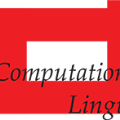Extended versions of the Lambek Calculus currently used in computational linguistics rely on unary modalities to allow for the controlled application of structural rules affecting word order and phrase structure. These controlled structural operations give rise to derivational ambiguities that are missed by the original Lambek Calculus or its pregroup simplification. Proposals for compositional interpretation of extended Lambek Calculus in the compact closed category of FVect and linear maps have been made, but in these proposals the syntax-semantics mapping ignores the control modalities, effectively restricting their role to the syntax. Our aim is to turn the modalities into first-class citizens of the vectorial interpretation. Building on the directional density matrix semantics, we extend the interpretation of the type system with an extra spin density matrix space. The interpretation of proofs then results in ambiguous derivations being tensored with orthogonal spin states. Our method introduces a way of simultaneously representing co-existing interpretations of ambiguous utterances, and provides a uniform framework for the integration of lexical and derivational ambiguity.
翻译:计算语言中目前使用的Lambek Calculus 扩展版本依赖于单数模式, 以便控制地应用影响文字顺序和短语结构的结构规则。 这些受控制的结构性操作产生衍生的模糊性, 最初的Lambek Calculus 或其前组简化则忽略了这些模糊性。 对FVect 和线形地图等紧紧闭类的扩展 Lambek Calculus 提出了组成解释建议, 但在这些提案中, 语法- 语法绘图忽略了控制模式, 有效地将其作用限制在语法中。 我们的目标是将这些模式变成矢量解释的第一等公民。 在方向密度矩阵语义的基础上, 我们扩展了对类型系统的解释, 并增加了一个额外的旋转密度矩阵空间。 然后对证据的解释导致模糊性衍生物与正弦相交织。 我们的方法引入了一种同时代表模糊性言词的共存解释方式, 并为整合词汇和引导出含糊性提供了统一的框架 。




